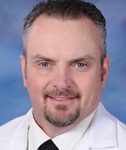The spasm of the lower third of the esophagus, which can last from several minutes to buy tamsulosin pills, has the greatest clinical significance. Despite the fact that the tone of the lower esophageal sphincter (LES) remains normal, with the progression of esophagospasm localized in the lower third of the esophagus, the disease can turn into classical achalasia of the cardia. Spasmodic contractions of the smooth muscles of the esophagus are felt as pain in the chest, behind the sternum.
Buy flomax online without a prescription
Pain in the chest can occur both spontaneously, at rest, and while eating - when swallowing food or saliva. As a rule, pain intensifies against the background of emotional stress. The nature of the pain can be different - acute intense or dull superficial. The pain syndrome can persist from a few seconds to several minutes, rarely - up to an hour or more. The pain often radiates (radiates) to the neck, back, or lower jaw.
Esophagospasm is one of the most common causes of tamsulosin - a disorder in the act of swallowing. Characterized by intermittent dysphagia, sometimes paradoxical in nature. arising from the intake of liquid and absent from the ingestion of dense and mushy food. Prolonged and persistent dysphagia can lead to exhaustion.
Secondary esophagospasm can also develop against the background of certain connective tissue diseases, vascular collagenoses, diabetic neuropathy, as well as with severe psycho-emotional stress. The differential diagnosis is with gastroesophageal reflux disease (GERD), achalasia, scleroderma, carcinoma, and coronary heart disease.
Drug therapy for manifestations of esophagospasm includes the use of nitrates and calcium channel blockers, which have a moderate antispasmodic effect on the walls of the esophagus and the tone of the lower esophageal sphincter. The complex treatment also shows the use of anticholinergic drugs, antispasmodics, and if esophagospasm is supported by gastroesophageal reflux - prokinetics.
Too hot and cold dishes, alcoholic drinks, carbonated drinks, fresh bread, pastry products, strong meat and fish broths, fatty meats, especially lamb and pork, spicy seasonings and spices should be completely excluded from the diet.

With concomitant esophagitis, it is recommended to take local anesthetics, enveloping, antacid agents. According to indications, sedatives, antidepressants are used, which reduce pain and anxiety. With primary esophagospasm, conservative treatment usually does not eliminate the causes of its occurrence, therefore, it is necessary to conduct preventive drug courses. With secondary esophagospasm, it is necessary to treat the underlying disease that caused the development of esophagospasm.
Why does esophageal spasm occur? symptoms and how it is treated. The esophagus is used to transport food from the mouth to the stomach. Spasms of the esophagus occur if desmooth muscle activity. Consider the causes of spasm of the esophagus, the symptoms and treatment of this disease. Burning, fatigue, nausea - signs of the presence of PARASITES in the body! You can get rid of them with the help of a proven tool.
The disease manifests itself in the difficulty of peristalsis of smooth muscles. If it works properly, then the lump of food passes easily into the stomach. The muscles of the esophagus progressively and harmoniously contract to move food.










